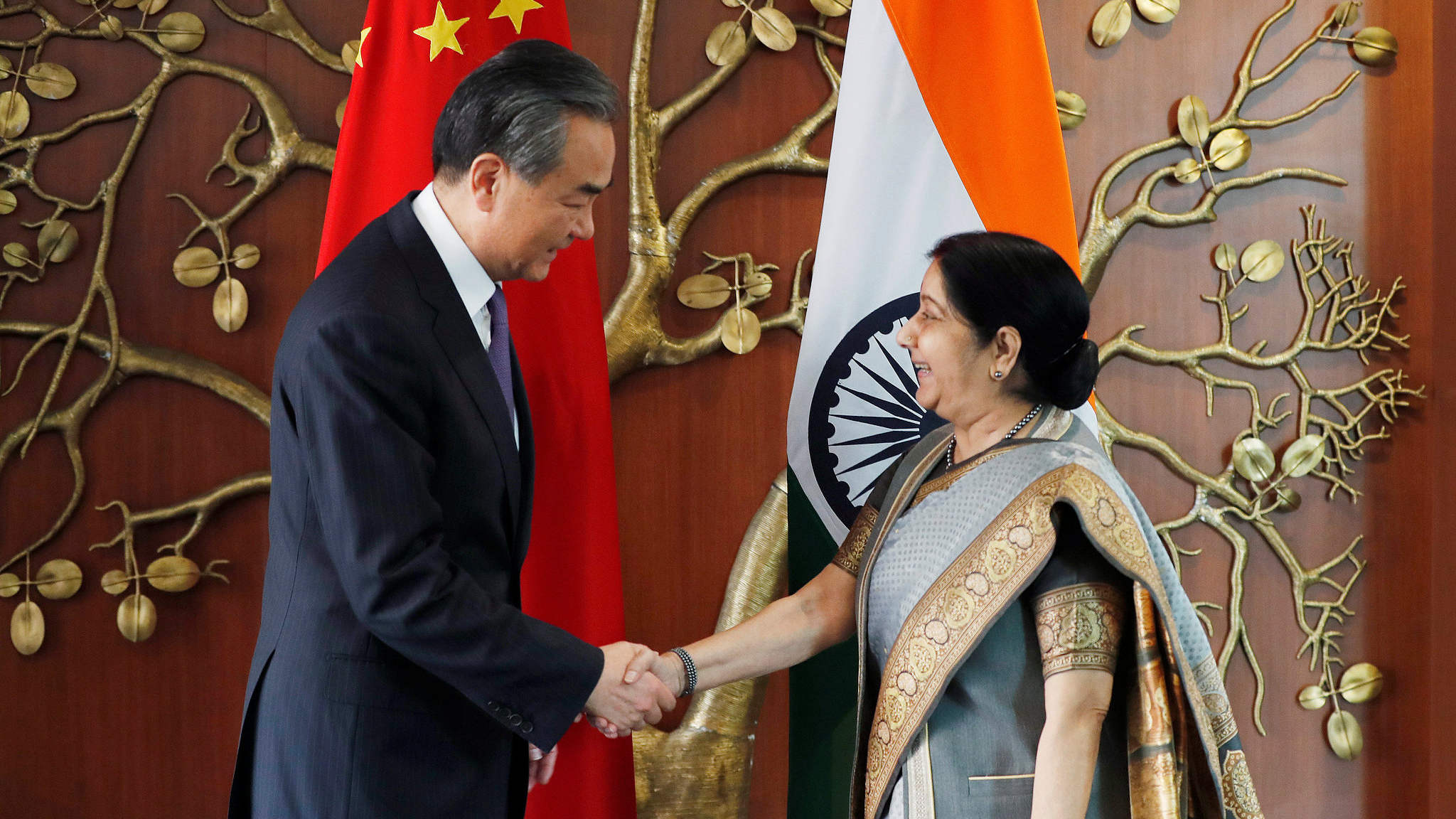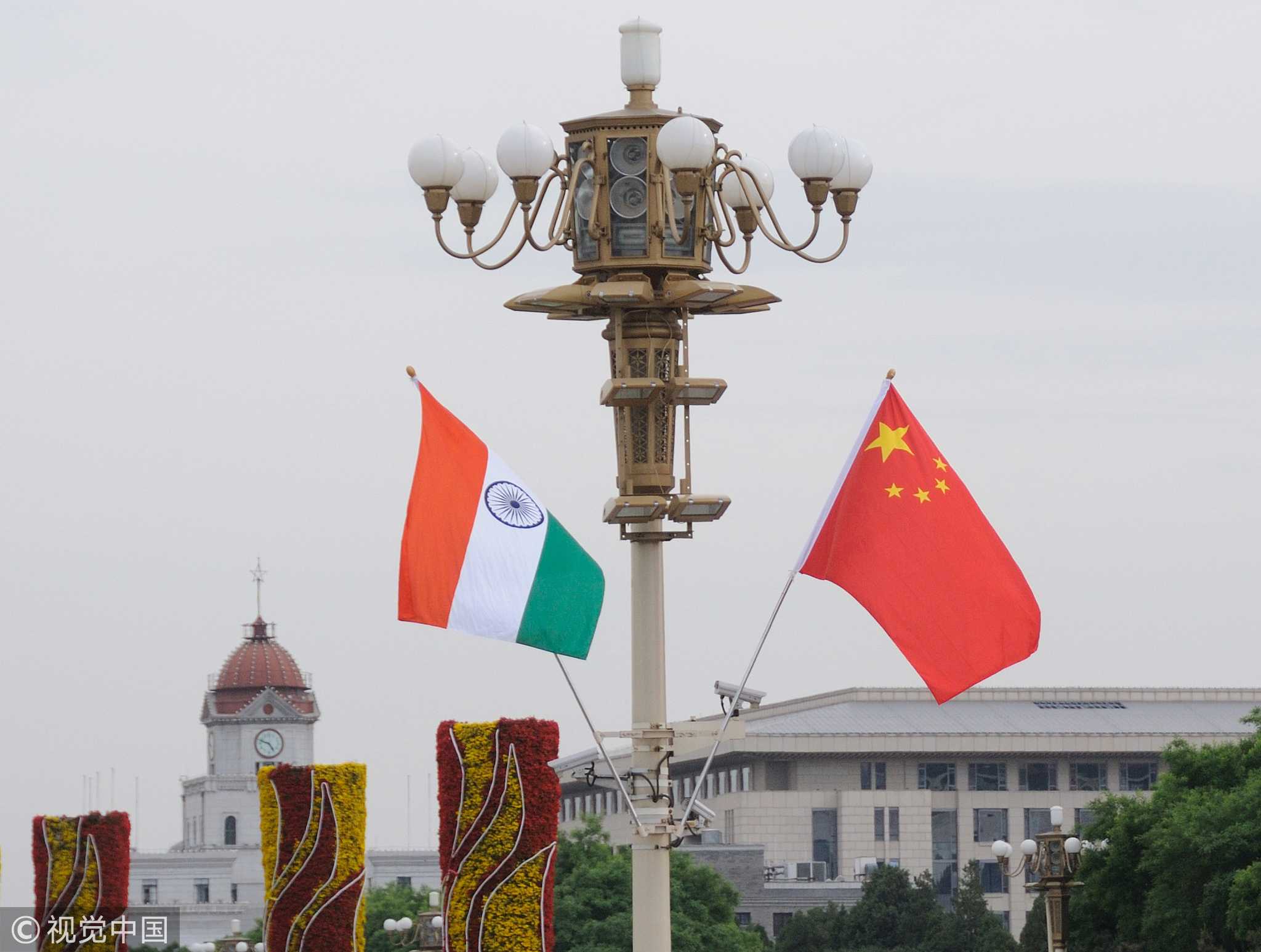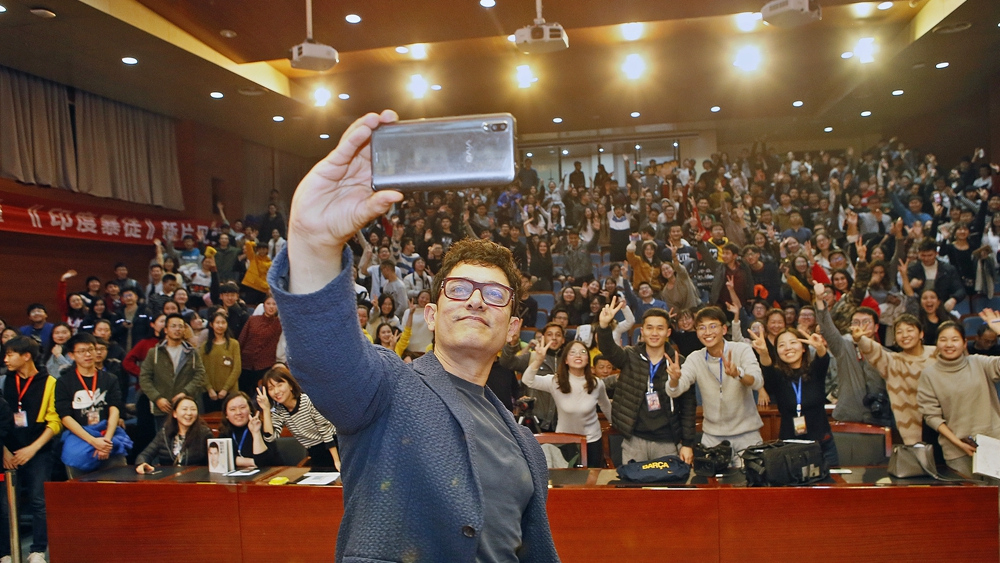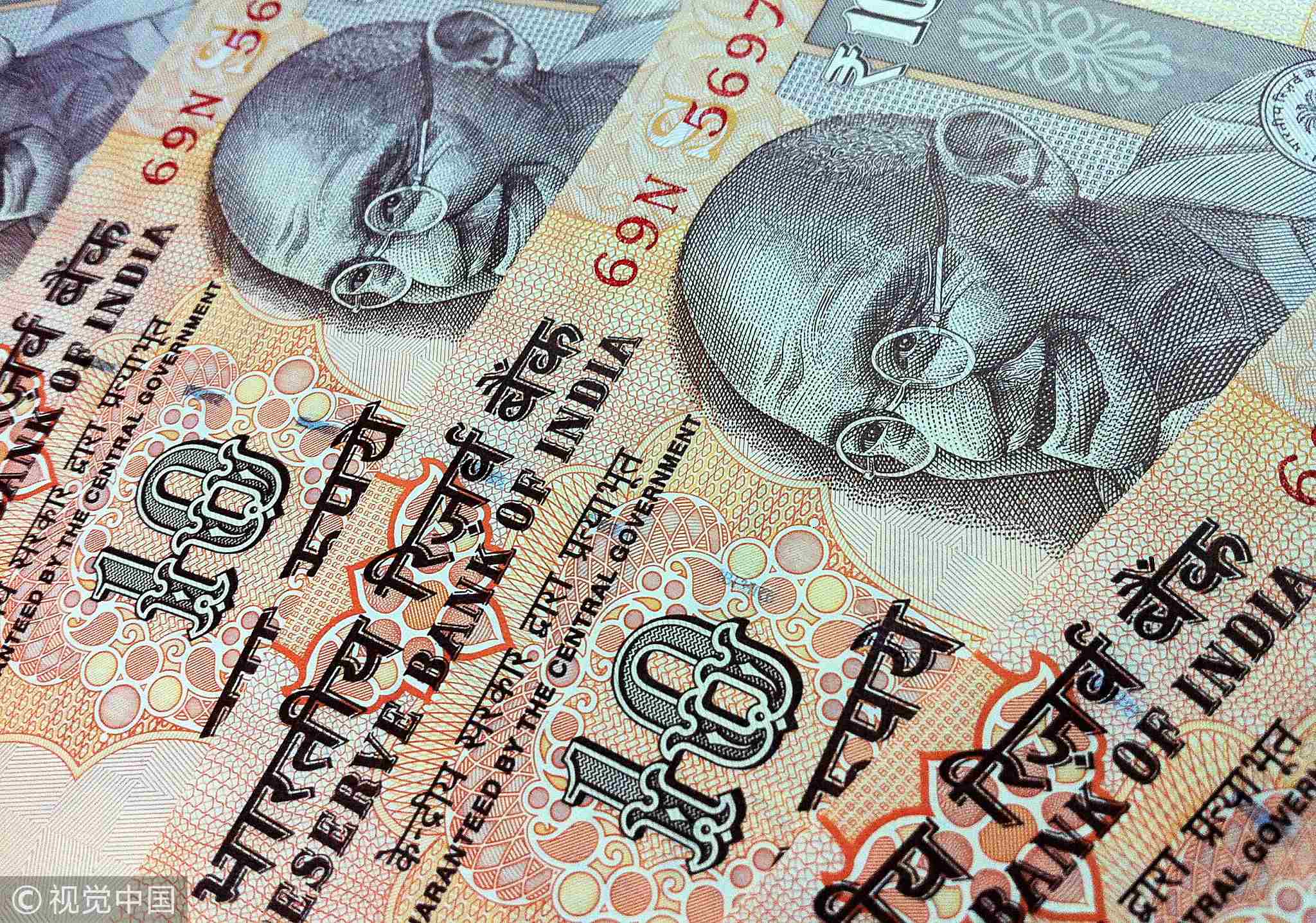
Opinions
08:59, 26-Dec-2018
Opinion: A more solid Sino-Indian relationship is underway
Updated
08:29, 29-Dec-2018
Ning Shengnan

Editor's Note: Ning Shengnan is an assistant research fellow at the Department for Developing Countries Studies at the China Institute of International Studies. The article reflects the author's opinion, and not necessarily the views of CGTN.
From December 21 to 24, Chinese State Councilor and Foreign Minister Wang Yi visited India to co-chair the first meeting of China-India High-Level Mechanism on Cultural and People-to-People Exchanges.
During this visit, Wang Yi spoke with Indian President Ram Nath Kovind and held extensive talks with his Indian counterpart Sushma Swaraj.
The newly constituted mechanism echoed the need to deepen mutual understanding between both sides. Although China and India have kept constant communication, peoples' understanding of each other is quite limited.
For a long time, direct interaction between the two nations was not enough to satisfy people's curiosity about each other's religion, culture and society. This is why the two governments chose to initiate this program.
Through this first meeting, cultural areas were identified as a priority to boost bilateral contact. Besides, China and India decided to increase exchanges between provinces and cities.

Chinese and Indian national flags /VCG Photo
Chinese and Indian national flags /VCG Photo
For these two neighbors, more access to each other's cultural resources means more opportunity to learn about each other and more aware of each other's needs. This important element would make the bilateral friendship become firmer and more flexible.
Also in December, Chinese and Indian militaries jointly conducted the 7th “Hand-in-Hand” military exercise in southwest China's Chengdu City. This year's exercise focuses on counter-terrorism operations. After a gap of one year in 2017, the two sides are making efforts to resume the military ties that were once strained because of the border standoff.
And just as its name “Hand-in-Hand” indicates, military forces from China and India are now working together to promote mutual understandings and improve combat capabilities.
Both of these two activities above are based on the strategic consensus reached in the historical Wuhan summit. During this unprecedented informal meeting, Chinese President Xi Jinping and Indian Prime Minister Narendra Modi have set the guiding principles for bilateral relations, and drawn up a blueprint for closer cooperation.

India's Prime Minister Narendra Modi (L) being welcomed upon his arrival in Wuhan, ahead of a meeting with Chinese President Xi Jinping, April 26, 2018 /VCG Photo
India's Prime Minister Narendra Modi (L) being welcomed upon his arrival in Wuhan, ahead of a meeting with Chinese President Xi Jinping, April 26, 2018 /VCG Photo
Also, the two leaders decided on a number of practical steps to bring down tensions and to implement their consensus.
The Wuhan summit was followed by frequent interactions between the two leaders: They have met on the sidelines of the Shanghai Cooperation Organization (SCO) in Qingdao, the BRICS leaders' summit in Johannesburg as well as the G20 leaders' summit in Buenos Aires.
Cooperation at all levels are making breakthroughs: China and India have decided to expand the bilateral trade volume, and the two sides have achieved constructive outcomes at the 21st round meeting of Special Representatives on the border issues. Plus the Cultural and People-to-People Exchanges Mechanism, a more solid and well-structured Sino-Indian relationship is quickly taking shape.
The closer development partnership is at the very core of this Sino-Indian relationship. China and India are the world's two largest developing countries, therefore “development” is the keyword on both countries' national agenda.
The two nations have similar aspirations to create better-living conditions for their people. Their developmental goals are inter-linked and could be pursued in a mutually supportive manner.

Bollywood star Aamir Khan takes a selfie with his Chinese fans in Xi'an City, northwest China's Shaanxi Province, December 18, 2018. /VCG Photo
Bollywood star Aamir Khan takes a selfie with his Chinese fans in Xi'an City, northwest China's Shaanxi Province, December 18, 2018. /VCG Photo
Besides, in this globalization age, the respective growth models of China and India are different but highly complementary: China is expert in manufacturing while India owns excellent service industry, and both countries are rich in intellectual resources and creative ideas. The potential of bilateral developmental cooperation is huge.
An improving Sino-Indian relationship has regional and global significance. As the two biggest countries across Asia, relations between China and India could exert an important influence on the regional geopolitical landscape.
Bitterness would lead to high cost of suspicion, exclusion and even containment. On the contrary, cooperation between these two giants could create a better opportunity for their surrounding economies to enjoy the tranquil environment and pursue growth and prosperity.
Regional cooperative initiatives with these two countries' participation, such as the Regional Comprehensive Economic Partnership (RCEP) would bring about new momentum for the development of the whole area.

Indian currency Rupee /VCG Photo
Indian currency Rupee /VCG Photo
More importantly, the complexity and challenges of today's world call for China and India to co-operate. With the rising wave of protectionism and anti-globalization in many developed countries, the world is holding higher expectations on China and India to defend the multipolar global order and the free trade system.
No matter concerning the WTO reform, or in the climate change governance, China and India share an extensive common interest that constitutes strong motivations for the two sides to coordinate their positions and take effective actions together.
China is fully aware of this reality and is optimistic about the future of its relations with India. Right now the two countries are all set to work to explore broader space for win-win outcomes and to contribute their due share to the peace and prosperity of the world.
(Cover photo: Chinese Foreign Minister Wang Yi (L) shakes hands with his Indian counterpart Sushma Swaraj before the start of their meeting in New Delhi, India, December 21, 2018. /VCG Photo)
(If you want to contribute and have specific expertise, please contact us at opinions@cgtn.com.)

SITEMAP
Copyright © 2018 CGTN. Beijing ICP prepared NO.16065310-3
Copyright © 2018 CGTN. Beijing ICP prepared NO.16065310-3